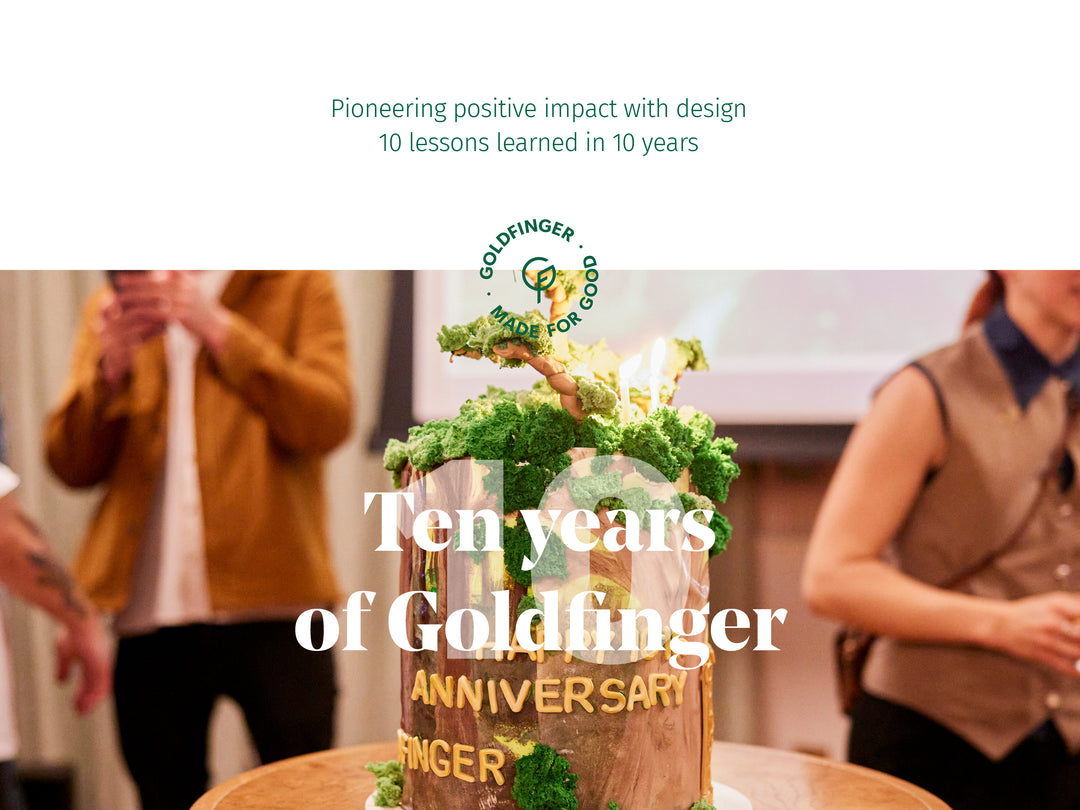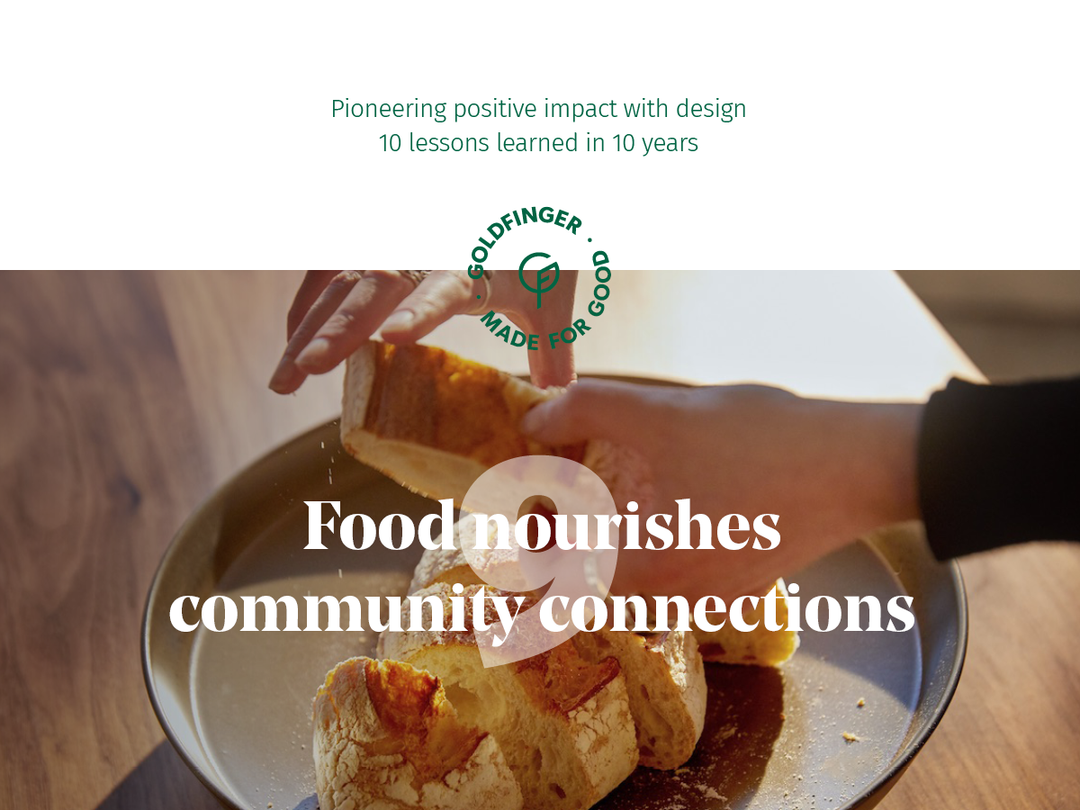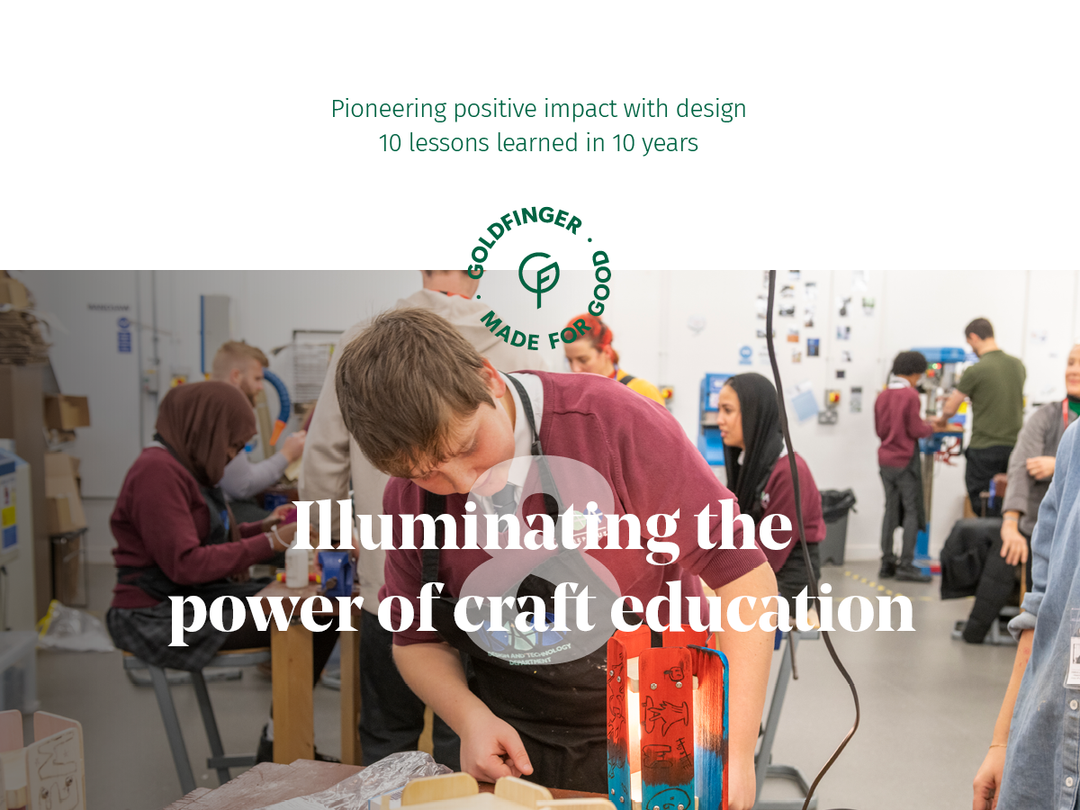Wood and wellness: design choices for healthier living

In celebration of our ten year anniversary, we’re sharing ten lessons we've learned since our beginning. We believe that the spaces we inhabit - our homes, workplaces, and everywhere in between - should not only look beautiful, but also have a positive impact on our lives too.
Today, we’re exploring the fascinating connection between wood and wellbeing, and the profound impact that thoughtful design can have on our mental and physical health.
Bringing the forest indoors
The Japanese practice of ‘Shinrin Yoku’, or forest bathing, is rooted in the belief that our mental wellbeing is directly linked to our environment. Immersing yourself amongst the calming sights and sounds of the forest, and ‘bathing’ underneath the canopy of the trees, has been proven to significantly reduce stress.
Studies have recently shown that being surrounded by wood — even in the home — has a similar impact on our wellbeing. Incorporating natural materials into your interiors allows you to bring the peace and beauty of the forest indoors, creating a space that enhances your connection to nature.
Using materials that reflect the unique character of your region can create an even more profound connection. That’s why we favour using locally-sourced timber where possible. As well as reducing unnecessary imports and giving local felled trees a second life as furniture, it also creates an opportunity for our interiors to echo the nature found on our doorstep.
“By crafting furniture that treads lightly on the planet, we can help to create spaces that soothe the soul and nurture our collective wellbeing."
- Marie Carlisle, Goldfinger Co-Founder and CEO

Nature’s healing touch
Nature is known to have a powerful restorative influence on our physical health. Recent research has indicated that exposure to wood and other natural materials also has demonstrable positive physiological effects.
Being surrounded by timber’s natural grain, texture, and warmth, creates a calm, inviting environment. As well as lifting our mood, it also lowers our heart rate. Incredibly, simply touching wood has been shown to significantly decrease blood pressure over time, compared to other materials, like metal or plastic, which have been found to elevate blood pressure.
“Nature’s healing touch is not just a sentiment, it's a philosophy we embrace at Studio Mae. Our designs prioritise the use of wood and other natural materials to harness the proven physiological benefits they offer. The warmth, texture, and grain of timber in our creations don't just create a visually appealing space, but they contribute to a calming environment that positively impacts mood and reduces heart rate.”- Mima Romanic, Co-founder and Head Interior Designer, Studio Mae
Along similar lines, the emerging field of neuroaesthetics explores how aesthetics influence our emotions and brain activity. From the texture of a fine grain, to timber’s warm, earthy scent, wooden pieces create an immersive, sensory-rich experience that extends beyond visual appeal. This helps to explain why being surrounded by wood makes us feel good - the interplay of senses creates a holistic, soothing design experience that appeals to our brain’s innate desire for beauty.
Embracing biophilia
Using natural materials helps us to foster a sense of harmony and wellbeing in our interiors. Biophilic design takes this one step further, incorporating the organic forms found throughout the natural world at the earliest stages of the design process. Curves, irregular patterns, and fluid lines mimic the shapes that we find in nature and evoke the calming essence of the outdoors.
- Mima Romanic, Co-founder and Head Interior Designer, Studio Mae

Healthy learning environments
A 2011 Austrian study found that high school students taught in classrooms furnished with solid wood have lower stress levels and decreased heart rates, compared to those taught in spaces without any wood furnishings at all (Kelz, C., Grote, V., & Moser, M., ‘Interior wood use in classrooms reduces pupils’ stress levels.’)
In schools and workplaces alike, interiors that make use of wood and other natural materials consistently result in increased productivity and improved wellbeing.
Over the past ten years, we’ve seen a remarkable transformation. Wellness in interiors was once an afterthought, and today, the movement is at the very forefront of design and architecture. Demand is only continuing to grow for natural materials, biophilic designs, and holistic, healthy interiors that put people and planet first. Whether for workplaces, schools, restaurants, hotels, or homes, incorporating wood into our interiors can have a lasting impact on our lives, creating a gateway to improved wellbeing.
Studio Mae: interior design for wellbeing
Drawing from their deep understanding of how elements such as scientific design (colour & light psychology), world teachings (Feng Shui), wellness building standards (air, light, acoustics, comfort) and sustainability contribute to the wellbeing of individuals, Studio Mae create beautiful interiors with finishes, furniture and fittings that are inspired by nature, tread lightly on the planet and promote better physical health and mental wellbeing.
"Our studio’s approach is to design for wellness and avoid fast interiors. Through light, air quality, biophilic elements, acoustic treatments, organic materials and low-toxic finishes, we ensure our interior schemes nurture health and planet, not harm them.”
- Mima Romanic, Co-founder and Head Interior Designer, Studio Mae

Liz Linforth and Mima Romanic, Co-Founders of Studio Mae, and thought leaders in emotive, sensory and ethical design.
Further reading:
- Planet Ark Research Report: Wood, Housing, Health, Humanity
- Woodland Trust: Forest Bathing
- The Forest Bathing Institute
-
Author: Goldfinger
Contributors: Mima Romanic, Co-Founder & Head Interior Designer, Studio Mae


